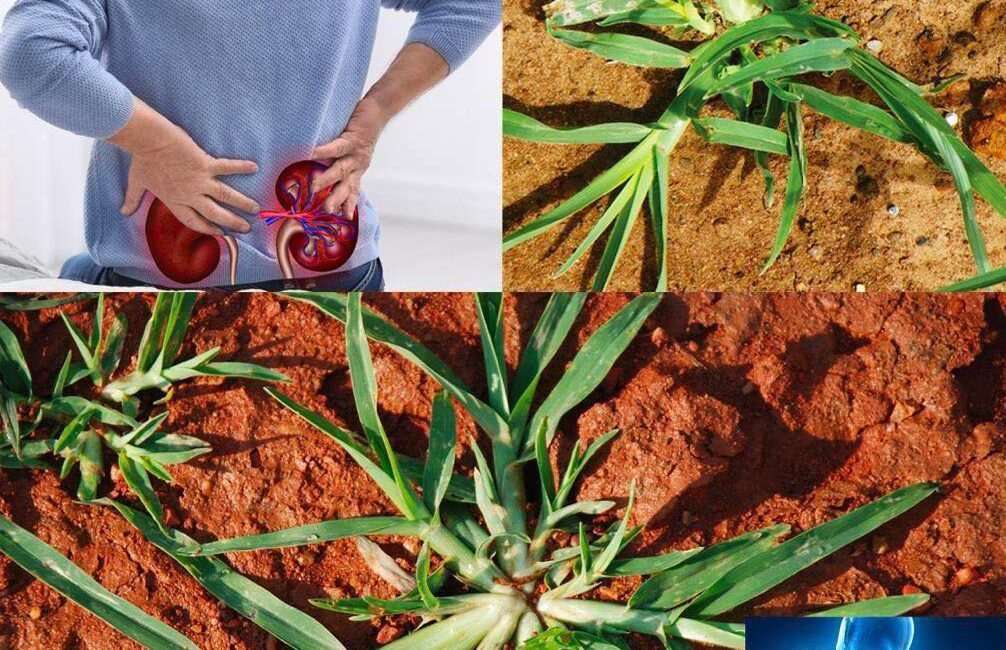Goosegrass has natural anti-inflammatory properties, which make it beneficial for soothing irritation in the urinary tract. Chronic inflammation in the kidneys can lead to conditions such as nephritis (inflammation of the kidneys) and other urinary tract disorders. By reducing inflammation, goosegrass helps promote kidney health and ease discomfort caused by swelling and irritation in the urinary system.
2.4 Antioxidant Protection
Like many other plants used in herbal medicine, goosegrass is rich in antioxidants. These compounds protect the body from oxidative stress, a condition in which harmful free radicals damage healthy cells. The kidneys, being vital organs that filter the blood, are particularly susceptible to oxidative damage. Antioxidants in goosegrass can help protect kidney cells from this damage, reducing the risk of chronic kidney disease and promoting overall kidney function.
Studies have shown that oxidative stress plays a significant role in kidney diseases, leading to cell death, inflammation, and fibrosis (scarring). By neutralizing free radicals, goosegrass helps to prevent kidney damage and supports long-term kidney health.
3. How to Best Take Advantage of Goosegrass for Kidney Health
To harness the full benefits of goosegrass for kidney health, it can be incorporated into your routine in several ways. Whether consumed as a tea, powder, or fresh juice, goosegrass can provide the necessary diuretic, detoxifying, and anti-inflammatory benefits to support kidney function.
3.1 Goosegrass Tea
One of the most common and effective ways to use goosegrass for kidney health is by making a goosegrass tea. This simple method allows you to extract the beneficial compounds from the plant and consume them in a convenient form. Here’s how to prepare goosegrass tea:
Preparation:
- Collect a handful of fresh or dried goosegrass leaves.
- Boil them in a pot of water for 10-15 minutes.
- Strain the mixture and allow it to cool slightly before drinking.
Usage:
Drink 1 cup of goosegrass tea once daily, preferably in the morning. This timing ensures that the diuretic effect does not disrupt your sleep by causing nighttime urination. If you’re using goosegrass to treat a specific condition like edema or kidney disease, you can gradually increase the amount to 2 cups per day, but it’s important to consult a healthcare provider first.
3.2 Powdered Goosegrass Supplements
Goosegrass can also be consumed in powdered form. Dried goosegrass can be ground into a fine powder and encapsulated, offering a convenient way to take the herb. The powdered form retains all of the plant’s active compounds and can be easily added to your daily health routine.
Preparation:
- Dry the goosegrass leaves thoroughly in the sun or using a dehydrator.
- Grind the dried leaves into powder using a mortar and pestle or a grinder.
Usage:
The standard dose of powdered goosegrass is approximately 500 mg per day. However, the optimal dosage may vary depending on individual health needs, so it is important to consult a healthcare professional before taking any herbal supplements.
3.3 Fresh Juice or Smoothie Addition
For a more gentle kidney cleanse, you can add fresh goosegrass to your daily green juice or smoothie. This is an excellent way to incorporate goosegrass into your diet without having to make a separate tea.
Preparation:
- Add a small amount (1-2 teaspoons) of freshly chopped goosegrass leaves to your juice or smoothie.
Usage:
Consume this mixture a few times a week, especially if you’re aiming for a natural detox. Fresh goosegrass can be an excellent addition to any green drink, contributing to kidney health as well as providing added nutrients.
3.4 Topical Use for Kidney Support (Ancient Practice)
Although goosegrass is mainly known for its internal health benefits, it can also be used topically to alleviate swelling and discomfort associated with kidney issues. Goosegrass poultices are applied to the skin and can help reduce overall body swelling, which is often a symptom of kidney dysfunction.
Preparation:
- Crush fresh goosegrass leaves and apply them directly to areas of the body that are swollen, such as the joints or limbs.
Usage:
Leave the poultice on for 10-15 minutes. Although this practice is ancient and more commonly used for external swelling, it may help reduce the strain on your kidneys by improving circulation and lymphatic drainage.
4. Safety and Considerations
While goosegrass is generally considered safe for most people, there are some important considerations to keep in mind:
- Consult a healthcare professional before using goosegrass if you have pre-existing kidney conditions, are pregnant, or are on medication, especially diuretics, as goosegrass may interfere with other treatments.
- Goosegrass’s diuretic effect may cause dehydration if not taken with adequate hydration. Make sure to drink plenty of water when using goosegrass as a diuretic.
- If you experience any adverse reactions, such as dizziness, nausea, or excessive urination, discontinue use and consult a healthcare provider.
5. Conclusion
Goosegrass (Eleusine indica) is a versatile and potent herb with numerous health benefits, particularly for kidney health. Its diuretic, anti-inflammatory, and antioxidant properties make it an effective natural remedy for promoting kidney function, detoxification, and reducing swelling. Whether consumed as a tea, powder, or fresh juice, goosegrass offers a simple and natural way to support your kidneys and improve overall health.
While goosegrass can provide significant health benefits, it is essential to use it responsibly and consult a healthcare professional if you have




